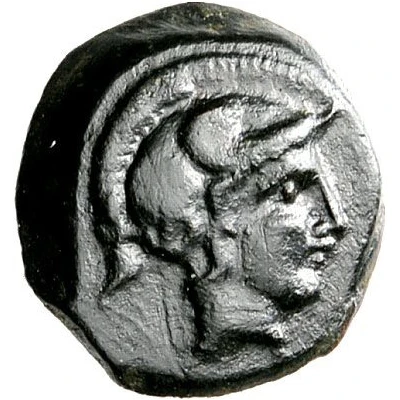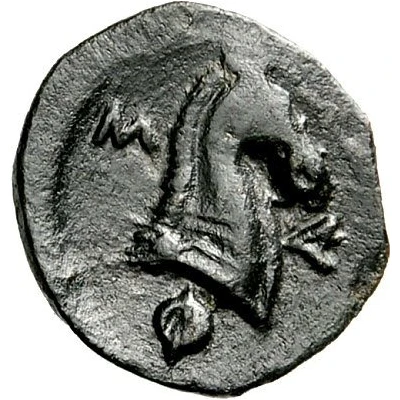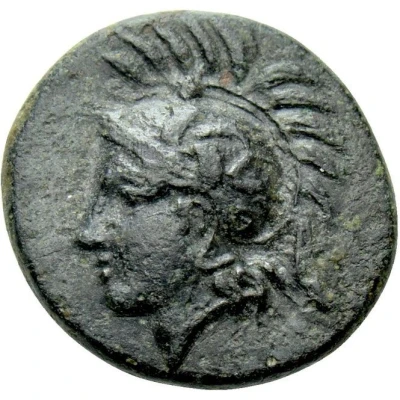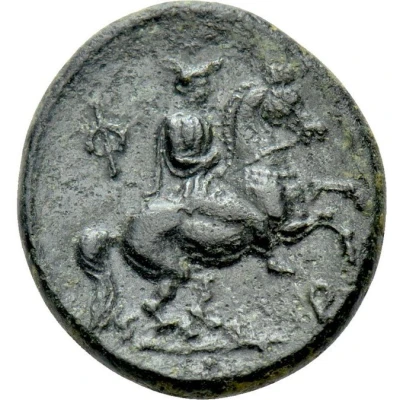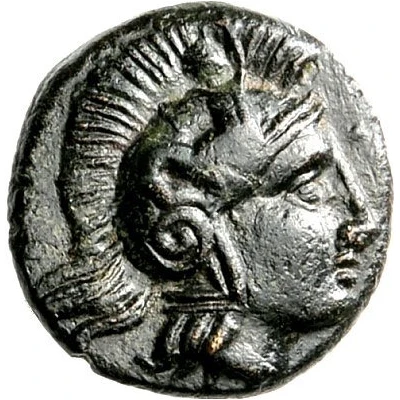
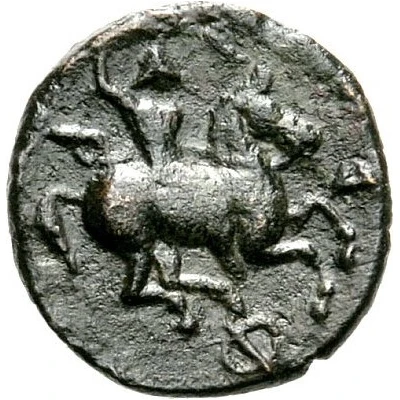

© Nomos AG
Chalkon 425 BC - 375 BC
| Bronze | 1.45 g | 12.0 mm |
| Issuer | Pharsalos (Thessaly) |
|---|---|
| Type | Standard circulation coin |
| Years | 425 BC - 375 BC |
| Value | Chalkon (1⁄48) |
| Currency | Drachm |
| Composition | Bronze |
| Weight | 1.45 g |
| Diameter | 12.0 mm |
| Shape | Round (irregular) |
| Technique | Hammered |
| Demonetized | Yes |
| Updated | 2024-10-10 |
| Numista | N#171244 |
|---|---|
| Rarity index | 95% |
Reverse
Armored Thessalian horseman riding galloping horse to right, brandishing flail
Script: Greek
Lettering: Φ Α Ρ
Interesting fact
The Chalkon coin was used as a form of currency in ancient Greece, specifically in the city-state of Pharsalos (Thessaly) during the 4th century BC. The coin's design features the image of a horseman on one side and a helmeted warrior on the other, symbolizing the city's military prowess and power. Despite its small size and relatively low value, the Chalkon coin played an important role in the economy of Pharsalos and surrounding regions, facilitating trade and commerce for everyday goods and services.
